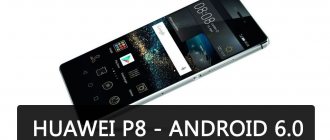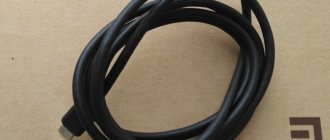Xiaomi and Huawei are companies that are significantly similar to each other. Often, when choosing a budget smartphone, most of us buy either Honor or Redmi. And even in this case, that is, when using sub-brands, specific parallels can be drawn. It is impossible to say for sure which of these companies is better. Some people prefer Xiaomi, while others have been fans of Huawei for a long time. But still, we will try to analyze various aspects by comparing the phones of these two companies.
Device cost
Just a few years ago, both Huawei and Xiaomi won the hearts of fans precisely due to low prices and successful solutions. However, over the past two years the situation has changed quite well. For example, Huawei has already moved closer in price to Korean smartphones from Samsung and LG. In turn, Xiaomi remains approximately at the same level where it was. But still, the average price tag has increased a little. For example, Huawei flagships, after they are announced and go on sale, cost from 35, or even 40,000 rubles. At the same time, top Xiaomi models are at least 10 - 15 thousand cheaper.
If we consider the budget class, then the difference is even more noticeable. So, at almost the same cost, Huawei and Honor, for example up to 15,000 rubles, will have a glossy case and plastic. Xiaomi has models with a glass case, for example, Redmi Note 7 or Mi8 Lite. And in terms of such characteristics as processor power, amount of RAM and permanent memory, and other parameters, the advantage is again often in favor of Xiaomi. Thus, in terms of cost, they are clearly in the lead.
Range of models in different segments
Both Huawei and Xiaomi have a fairly wide range of smartphones. However, due to Honors and the abundance of state employees, the advantage will still go towards Huawei. In the first 4 months of 2021 alone, Xiaomi introduced only 9 new models, while Huawei introduced 17 units, that is, almost 2 times more. While creating its next flagship, Huawei is developing several modifications. As a rule, they differ in screen characteristics and other features.
If you look into the class of devices such as phablets, the situation here is even more interesting. Xiaomi has only 1 model in the Max series, which belongs to the middle price category. And Huawei has several large devices that cover a fairly wide price range. There is the Honor 8X Max, the flagship Mate 20X, and also, of course, several intermediate smartphones.
From here we can draw one most important conclusion: Huawei wants to reach as many consumers as possible, but Xiaomi still focuses on the budget and middle class.
Technologies used and hardware in devices
Here we get a picture where Huawei is clearly ahead. They have their own Kirin processors, which help optimize the system, improve energy efficiency, and, in principle, their own technologies make production much more profitable. Also, which is important, Huawei is increasingly adding NFC chips even to its budget smartphones, while Xiaomi somehow neglects this.
As for the development of Xiaomi’s own technologies, things didn’t go any further beyond the Surge S1 trial chip. So in this direction, Huawei is again a leader. But even here everything is not so clear.
If you look specifically at performance, then hardware, as a rule, is Xiaomi’s main trump card simply because they use Qualcomm chips - cool Snapdragons, which are market leaders in performance in any class. Thus, we get a situation where Xiaomi, although it has a noticeably smaller lineup, uses modern chips in each of its smartphones. All this makes them the best among competitors in terms of price-performance ratio. At the same time, Huawei, at least occasionally, still releases a couple of models on old chips, which quickly lose relevance and pale in comparison to Xiaomi.
For example, the mid-budget Kirin 710, which in principle is quite modern, cannot be compared with the Snapdragon 710, and only in some parameters it catches up with some Snapdragon 636 or 660. From here, reading the characteristics of the phone, you seem to see similar numbers, but in reality it turns out that you get worse performance when choosing Huawei. And this is only the case when we consider the processor part.
As for the integrated graphics, Adreno, together with the Snapdragon 845, simply destroys the Kirin 980. At the same time, we note that the Snapdragon 850 has already appeared, which is even more interesting.
So in terms of hardware, Xiaomi clearly wins, although it does not use its own technologies.
Comparison of Xiaomi and Huawei phones
To understand which brand’s smartphone is better, you need to carefully consider all the features from performance to battery life. For an objective comparison, we did not pay attention to the Honor and Redmi lines, focusing on the main brands. At the same time, both expensive and very affordable models were considered.
Performance
Power or performance is one of the main characteristics of a smartphone. It determines how smoothly the device will operate and whether it can handle resource-intensive games. As a rule, the power of the phone is determined by the processor.
Huawei smartphones are equipped with self-produced chips, while Xiaomi uses MediaTek and Snapdragon processors. Comparing the two most affordable models (Huawei Y6 and Xiaomi Mi Play), it is not possible to notice much difference in performance.
If we turn to the segment of mid-budget devices, where a comparison of Huawei P30 Lite and Xiaomi Mi A3 suggests itself, then Xiaomi will have an undoubted advantage. The Snapdragon 665 chipset is significantly faster than the Kirin processor and also demonstrates greater stability.
In the flagship segment, both brands are trying to install the most powerful processors. In the case of Huawei, this is, of course, Kirin, and Xiaomi opts for Snapdragon. The 2 latest models from the manufacturers Huawei P40 Pro and Xiaomi Mi 10 Pro are really very good at games and demonstrate an enviably smooth interface. But in synthetic tests, the Snapdragon 865 wins the unconditional victory, gaining almost 100 thousand points more in the AnTuTu benchmark compared to the Kirin 990.
Based on models of different price segments, we can conclude that Xiaomi smartphones are more powerful in almost every class. This is due to the use of more advanced chips from Qualcomm, which are the best on the Android device market.
Despite all the advantages of Qualcomm processors, they are still inferior to Apple chipsets. For example, the one installed in the iPhone 11 Pro.
Design and management
Both manufacturers pay serious attention to the design of their devices. Xiaomi and Huawei are in leading positions in this direction, as the companies set trends in the industry.
If you put the average Huawei and Xiaomi next to each other, you will not be able to detect the difference except for the brand logo. The model range of both companies includes smartphones with a retractable camera (Huawei P Smart Z and Xiaomi Mi 9T), models with a drop-shaped notch, and those devices where the front camera module is literally embedded in the display (Huawei Nova 5T and Xiaomi Mi 10).
The design of the back cover of the two comparison participants is also identical. In the budget class, colorful plastic is used, and in more expensive models, manufacturers try to install a glass cover with a gradient. In all cases, smartphones look very beautiful, so it’s impossible to give preference to a specific brand.
There is no need to talk about management at all. In 2021, almost all companies producing Android smartphones have abandoned touch control keys. In this regard, control is carried out using on-screen buttons or gestures.
Display
Without exaggeration, the screen can be called the face of a smartphone. The buyer’s overall impression of the device depends on how clearly and colorfully the picture is displayed.
The cheapest Xiaomi and Huawei models have IPS matrices with HD+ resolution. In principle, this is a good solution, but due to the low pixel density, the screen grain is noticeable. In more expensive smartphones, the resolution increases to FullHD+, but the type of matrix remains the same. The exception is the Xiaomi Mi A3, which for a price tag of around 10 thousand rubles offers an AMOLED screen, but with HD+ resolution.
Despite the advantage of AMOLED matrices in terms of color reproduction, such screens flicker heavily, which can cause eye fatigue for the owner.
The flagship segment is a field for experimentation for each manufacturer. Of course, Xiaomi and Huawei are not abandoning the use of AMOLED matrices here, but they are trying to bring something new. For example, Xiaomi Mi 10 and Huawei P40 Pro have a curved waterfall screen. This solution looks extremely impressive, and the picture quality does not raise any questions.
Since almost all companies on the market use matrices from the same manufacturers, it is impossible to say that the Huawei or Xiaomi display is better. Both companies offer displays of comparable quality, but Xiaomi experiments more often than its competitor.
Cameras
Perhaps the main characteristic that forces the buyer to choose one or another model. Here we will not consider budget and mid-budget smartphones, but will immediately turn to the most advanced flagships of Huawei and Xiaomi.
Let's compare Huawei P40 Pro and Xiaomi Mi 10 Pro. The first model is equipped with a 40-megapixel main camera with a wide (40 MP), a telephoto lens (12 MP) and a ToF sensor. The smartphone takes cool pictures both during the day and in the evening, and also records video in 4K 60fps.
The Xiaomi device is equipped with a 108-megapixel main camera with 10x optical zoom. These are incredible figures for a smartphone, especially since the device records video in 8K. The wide-angle lens is slightly inferior in quality to the Huawei device, but all other things being equal, it is the Xiaomi flagship that wins the camera comparison. This fact is a little surprising, since until recently Huawei was considered the undisputed leader in photo and video.
Battery
Smartphone batteries from different brands are no different from each other. In both cases, lithium polymer batteries are used, which are lightweight and charge quickly.
But in terms of specific capacity, Xiaomi devices win. Smartphones from the two companies, which have identical prices and a set of basic characteristics, have batteries of different sizes. Xiaomi tries to install the largest batteries, as it did in the Xiaomi Mi Max 3 (5500 mAh). The competitor's maximum rating is 5000 mAh.
Software
In most cases, manufacturers use proprietary software. Xiaomi has MIUI, Huawei has EMUI. The design of the shells is different, but it will be difficult to say which firmware is more convenient. But Xiaomi's OS has a significant drawback - the presence of built-in advertising. Offers from partners appear in all standard programs, so the victory in this category is awarded to Huawei.
The Xiaomi line of devices includes smartphones that are based on pure Android. This is the Xiaomi Mi A series.
Signal quality
Huawei and Xiaomi, which are sold in Russia, are localized and are excellent for use in our latitudes. Smartphones catch 4G wherever there is support for fourth generation networks. In addition, both companies began releasing models with 5G in 2021, but this technology is not yet used in Russia.
Working hours
When assessing the autonomy of devices, we have to return to comparing batteries. As we found out earlier, Xiaomi installs larger batteries, and Snapdragon processors have better energy efficiency. In this regard, the conditional flagship Xiaomi Mi 10 will last longer than the Huawei P40.
Memory
Built-in storage is a controversial thing, since in the budget segment you cannot find a model with a memory capacity of over 64 GB. But almost all Xiaomi and Huawei flagships have modifications of 256 and even 512 gigabytes. But the victory in this comparison goes to Huawei, since the competitor refuses to use a memory card slot in older models.
Phone capabilities
Xiaomi and Huawei really know how to surprise. Manufacturers often equip their devices with advanced features that were not previously available. Smartphones from both companies are equipped with modern security features (fingerprint scanner), interesting solutions (retractable front camera), as well as an NFC module for making contactless payments. It is impossible to give victory to anyone in this comparison. Both Huawei and Xiaomi equip models of different price segments with all the necessary functions.
All other things being equal, only Huawei has a smartphone with a bendable screen - Huawei Mate X. Xiaomi does not have such a gadget.
Build quality
Huawei and Xiaomi carefully monitor all stages of the smartphone manufacturing process. That’s why the gadgets from the two companies turn out to be of such high quality. You can only find fault with the assembly in the case of the cheapest models that use plastic. But in more expensive devices it is impossible to find fault with the assembly of Huawei and Xiaomi.
Camera quality
Here we get an extremely ambiguous situation. Huawei flagships are equipped with new cameras, which are created as part of cooperation with Leica. Its developments consistently rank high in the photography market and are clearly ahead of the flagships from Xiaomi.
However, if you look at the middle and budget segment, then we can observe a completely opposite situation. Some conventional Redmi or Mi for 15,000 rubles. shows results at the level of Huawei for 20,000 or more.
Therefore, we can say for sure that if you choose a flagship, then you need to buy Huawei. But in the case of state employees or an average smartphone, you should give preference to Xiaomi and enjoy life, which, in general, is what most buyers do.
Autonomy indicators
Next, we will look at the aspect of battery life, or, more simply, the autonomy of smartphones. In this regard, if we looked a couple of years ago, we could say with confidence that Xiaomi is the absolute leader. However, now the situation is similar to that which occurs in the case of cameras.
In the mid-range and budget segment, Redmi and other Xiaomi smartphones remain leaders. They firmly hold their positions and always occupy high positions in the ratings of the best smartphones in terms of autonomy. The Max models stand out even more in this regard. Huawei also has plenty of “long-livers”, but still in the middle segment things are a little worse, especially due to the fact that inexpensive smartphones do not support the fast charging function.
In the case of flagships, the situation is completely opposite. Xiaomi released its last real flagships at the end of 2021 and these were Mi Mix and Mi Note 2. They had a good battery and generally pleased all fans. Now we get a situation where a battery with a capacity of 4000 milliamp hours or more is installed only in special gaming smartphones - these are Black Shark or Pocophone models, which can actually be called representatives of the middle class, despite the fact that they have a top-end processor. Huawei has good phones in its lineup with an excellent battery of 4000 milliamp hours. For example, the Make 20, 20 Pro, 20X, P20 Pro and P30 Pro models. And this is just what has come out over the past 12 months.
That is, again a contradictory situation when it is difficult to give preference to someone, and you need to understand what class of device you are buying.
Up to 10 thousand rubles
Competitors at this price: Xiaomi redmi 7(32gb) and Honor 8s(32gb).
Gadgets came out relatively recently. Therefore, they have a modern design - a screen with a “droplet”, an iridescent plastic cover, etc. The charging port for all is micro usb, it's an old fashioned port, but you can live with it.
The diagonal of redmi 7 is 6.21, and 8s – 5.71.
What is more important to you: compactness or a large screen, you choose. Both phones have IPS, normal viewing angles, natural colors. The black color is not deep. They also have HD+ resolution.
Honor 8s has a 4-core processor from Mediatek – MTK MT6761. It will not run “heavy” games at maximum graphics, only at low ones. But it will definitely be enough for everyday tasks. Xiaomi redmi 7 has an 8-core Snapdragon 632, this chip can easily handle games on average graphics.
The 8s has a 3020 mah battery, and the redmi 7 has a 4000 mah battery. The 8s will barely last you a day, but the redmi 7 can last 2, with moderate use.
Honor 8s has only one 13 megapixel sensor with an aperture of 1.7. Xiaomi redmi 7 takes photographs using two cameras, one 12 megapixel with aperture 2.2, and the other 5 megapixel, specifically for making bokeh.
Redmi 7 takes better photographs - wider dynamic range, better photo detail, more natural colors. The front cameras here are average, it will be difficult to do something useful with them, but for social media. networks are sufficient.
The sound in the headphones is the same on both phones, there is no difference. The sound from the speakers is louder and better quality on Xiaomi.
In this price category, Xiaomi redmi 7 wins in almost everything, so it is the best buy at the moment.
You can order redmi 7 directly from China in the GearBest store for $130, and Honor 8s for $225.
Honor 8s review:
Xiaomi redmi 7 review:
Software support
The last aspect is software support. We can say that there is equality between competitors, although of course with a slight advantage in favor of Xiaomi and its devices.
Regular updates occur with both MIUI and EMUI, where various new functions and features are added. However, if Xiaomi tries to release OS updates and improvements for most of its devices 3 years after their release, or even longer, then this is still rare for Huawei.
Also, both companies have phone models that receive new versions of the operating system in a minimum amount of time. For the most part, these are devices that are not very popular among buyers, as well as those built on chips from MediaTek. The Xiaomi brand also produces models in the Mi A series under the Android One program with absolutely pure Android (Mi A1, Mi A2, Mi A3). The competitor does not have this at all.
Enthusiasts are also much more likely to choose Xiaomi simply because they can unlock the bootloader to modify or change the firmware. But in the case of Huawei, everything is not so simple. In this regard, you need to use a paid code from a third party, which often costs more than $30.
About the Xiaomi brand
The well-known company, which produces almost anything, began its history in 2010, which is quite surprising. The young company was formed by a group of like-minded people. They were able to find investors who liked the idea of creating an alternative version of Android firmware with services in Chinese. This is what the MIUI firmware became.
The first device with this OS was the Google Nexus One. It was used as a way to evaluate the quality of the created system. The result was quite obvious - everyone liked the system so much that it is still used today.
Now about the main points in the history of such a young company.
- 2011. This is the first moment in the history of the company when it presented to the public its first smartphone on MIUI - Mi 1. The press appreciated the presented device and noted that it is quite good for its price. Then it sold a little, only 300 thousand copies, but the support and high ratings prompted us to continue working on the next smartphone.
- year 2012. A year after the release of Mi 1, the company introduced Mi 2, which everyone really liked, and therefore sales growth was significant. During the year, 10 million copies were sold, which made it possible to declare the success of this model.
Important! To promote, Xiaomi made the markup minimal, and for this reason, Mi 2 sold out like hot cakes.
- year 2013. Xiaomi is expanding production. The company, in addition to phones, begins producing its own televisions. A third smartphone model was also released, which was simply called Mi 3. It sold even more - 18.7 million copies. The sales growth is based on the fact that the company began opening offline stores where phones could also be sold. Before this, everything went over the Internet.
2013 is the time to expand for Xiaomi - year 2014. Expansion of the offline segment. The phone is going on sale in other countries, including Singapore, where they opened an offline store. Xiaomi begins to cooperate with Russia. Official Russian localization appears on phones. Redmi Note announced.
- 2015 Further expansion of sales leads to expansion into Latin America and India. In Brazil itself, for example, they opened a plant for the production of this company’s products. To expand production, Xiaomi begins to cooperate with Wintech, which allows it to use the company’s capabilities to produce new smartphones. In Russia, Svyaznoy is starting to sell MiPad, the first tablet from Xiaomi.
- 2016 Xiaomi opens its own brand store in Moscow. It begins the spread of offline stores in the Russian Federation.
- 2017 Xiaomi is one of the TOP 5 smartphone manufacturers among all companies in the world. More and more products from this company are appearing in Russia; with Redmi 5A, distribution begins through Tmall, the Russian division of the world-famous company AliExpress. Android One models are being promoted, for example, Mi Max 2, Mi A1 and the flagship Mi Mix,
- 2018 Three factories have been opened in India. The creation of the concept of the most budget Redmi Go phones begins. The 60th store has already been opened in Russia, which indicates the company’s close focus on Russia.
By 2021, Xiaomi has become what we know it now.
Now let's move on to interesting facts about this company.
- Xiaomi is a company that is not very keen on entering the US market, where it will not benefit much. All they sell there are smart fitness bracelets and various accessories.
- Xiaomi is the owner of its own crowdfunding platform, which is very similar to Kickstarter.
Note! Crowdfunding is a fundraising process for startups and small companies that want to launch new, often innovative, products.
- The company receives profit as follows: 94% comes from the sale of services through branded services, and the remaining 6% comes from markups.
- Xiaomi, which is important to note, is trying to buy patents than Huawei. That’s why we can safely talk about seven thousand patents in Xiaomi’s drawer.
Xiaomi has quite a rich history, which is interesting to watch.
Results
To summarize, it is difficult to identify a unanimous leader in each of the areas considered.
Increasingly, lovers of flagship hardware, interesting design and a good camera prefer Huawei. But in the budget direction, in most cases you will come across successful devices from Xiaomi. Although, of course, if you look higher, there are Mi Mix 3, Pocophone, and even the purely gaming Black Shark, which naturally attract attention.
So, among these two brands, it is impossible to single out anyone directly or specifically. Both Huawei and Xiaomi are really great guys. Companies are developing rapidly, releasing interesting devices, and it is unlikely that the situation will change dramatically in the next 5 years.
Package
Determining the best in the dilemma called “Honor 20 or Xiaomi Mi 9”, you will see practical parity in terms of equipment. Both gadgets received stylish boxes, which, in addition to the phones themselves, contain documentation, a clip for removing SIM cards, a cable, a charger unit and an adapter from USB Type-C to 3.5 mm mini-jack. Yes, good old Jack is no more. Therefore, either an adapter or buy wireless headphones.
The difference in configuration is visible only in one point. Xiaomi comes with its own case, while Honor gets a protective film. Purely subjective - the case wins.










